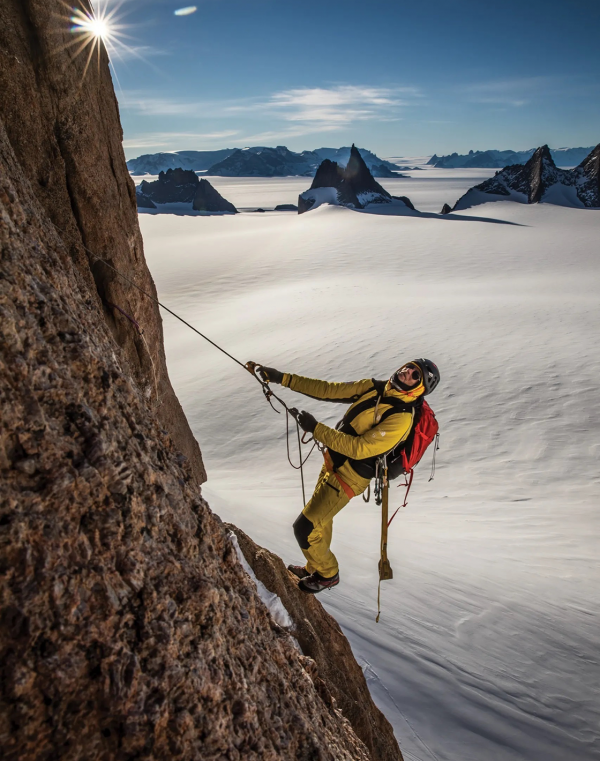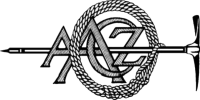- Home
- Nepal
- Adventure Activities
- Peak Climbing
- Mountain Expedition
- Local Tours
- Sirubari Village Homestay
- Ghale Gaun
- Kalinchowk Tour
- Halesi Mahadev - Maratika Cave package
- Chitwan Jungle Safari
- Day tour in Kirtipur
- Day tour in Kathmandu City
- Spiritual Tour to Muktinath
- Chitlang and Kulekhani
- Bardiya National Park
- Jeep Tour to Rara Lake
- Gosaikunda Lake
- Manakamana day Tour with cable-car ride
- 4WD Jeep Tour to Upper Mustang
- Family Holidays
- Heli & Mountain Flights
- Trekking Routes
- Kailash Mansarovar
- Bhutan
- Tibet
- Multi Country
- Domestic Flights
- Contact
- Home
- Nepal
- Adventure Activities
- Peak Climbing
- Mountain Expedition
- Local Tours
- Sirubari Village Homestay
- Ghale Gaun
- Kalinchowk Tour
- Halesi Mahadev - Maratika Cave package
- Chitwan Jungle Safari
- Day tour in Kirtipur
- Day tour in Kathmandu City
- Spiritual Tour to Muktinath
- Chitlang and Kulekhani
- Bardiya National Park
- Jeep Tour to Rara Lake
- Gosaikunda Lake
- Manakamana day Tour with cable-car ride
- 4WD Jeep Tour to Upper Mustang
- Family Holidays
- Heli & Mountain Flights
- Trekking Routes
- Kailash Mansarovar
- Bhutan
- Tibet
- Multi Country
- Domestic Flights
- Contact
Mera and Island Peak Climbing via Amphu Laptsa Pass

An exciting Peak Climbing Expedition
Mera and Island are two famous trekking peaks in the Himalayas for breathtaking panoramic views of five of top ten world’s highest 8,000m mountains on earth; Everest, Lhotse, Kanchanjunga, Makalu and Cho-Oyu, Climbing the Mera and Island peaks combined with crossing the high spectacular and challenging Amphu Lapcha pass makes this expedition a very special one.Resulting the summit of these two trekking peaks over 6000 meter is achievable goal.Further more the trek through the remote valleys of Hinku and Imja tse in Everest region. Great opportunity not to miss this trek in Himalayas.
2+
Detailed Itinerary
-
Day 1: Arrival to Kathmandu (Tribhuvan International Airport – TIA) (1, 350 m/4, 450 ft)
Upon your arrival at the Tribhuvan intl. airport our representative from Mountain Sun Valley treks welcomes you and assists to transfer in your hotel. -
Day 2: Full Day Tour, Kathmandu Valley Sightseeing
Today, after breakfast, we will do full day Kathmandu valley sightseeing to religious historic places around world heritage sites. Explore Pashupatinath, Swyambhunath, Buddhanath. Overnight stay at Kathmandu. -
Day 3: Flight to Lukla (2850 m/9,350 ft)-30 Minutes, trek to Chutang (3020m) – 5 to 6 hrs
We will take adventurous 24 minutes flight to Lukla. We then start our trek to Chutang. The Trek follows through hamlets and wood yards until we reach a thick forest of Silver fir, birch pastures and rhododendron and pine forests. There are many small streams with numerous places en route, the whole of this area referred to as Chutanga which is a summer pasture. We will explore the nearby villages. -
Day 4: Chutang to Chhatrwabuk/Thuli Kharka via Zatrwa La (4,620m) - 7 to 8 hrs
Today we will have a steep climp to cross the Kalo Himal Ridge range, then we will enter into the Hinku valley, leaving the Khumbu valley. We will continue walking towards Zatrwa La pass (4610m). Here we are welcomed by traditional Buddhist style with prayer flags. After the welcome ceremony we will continue our walk. From here less than an hour, we reach Thuli Karkha where we spent the night. -
Day 5: Chhatrwabuk to Kothe (4182m) – 4 to 5 hrs
Today we will be amazed by the beauty of hills filled with rhododendrons-Nepali national flower. Today’s trek is relatively short and downhill. The trail follows the Hinku Valley, beautiful forests of Himalayan pine and rhododendron, bamboo along a ridge to the Hinku River all the way up to Kothe. Overnight at Kothe. -
Day 6: Kothe to Thangnak (4356m) 4 - 5 hrs
Today our walk will be steady and gradual climb up the valley. We walk near the river on a rocky trail, and then climb up to grassy yak pastures (kharka) above river level. We pass through the Gondishung, which is a famous ancient monastery. We will then reach to Thagnang, where we will spend our night. -
Day 7: Thangnak to Khare (5045m) - 4 to 5 hrs
Today, our trek heads eastwards and walks up slowly in destination enjoying the beautiful scenery. After two and a half hours of climbing through the lateral moraine of Dig Glacier to walk on the large pasture of Dig Khraka, The trek, then leads to a steep climb through moraines to the snout of the Hinku Nup and Shar Glaciers. We will cross the stream and follow the trail across the boulder-strewn hillside for over an hour. The steep climb brings us to Khare where we will spend our night. -
Day 8: Acclimatization and Preparation day in Khare(5045m)
Today we have a rest day for acclimatization, exploration and practice of essential ice-climbing course under the guidance of our experienced climbing guide. After breakfast, we head up to the start of the Mera Glacier by climbing a steep ridge that we will later follow to the Mera La pass. Here we will take the opportunity to practice skills needed for glacial travel and organize a session on the glacier. Later in the day, we return to Khare for over night’s sleep. -
Day 9: Khare to Mera La (5415m) to Base Camp (5350m) - 4 hrs
Today will be an exciting day, where we will attend three hours over a boulder-strewn path up to the glacier, leading up to Mera La. After reaching the snout of the glacier where we gear up fully putting on crampons, harness, mountaineering boots and walking with ice axes. The views from the pass and first experience of mountaineering are spectacular. We will first climb up to the Mera La (5,410m) and back up the ridge and then onto the back of the Mera base camp to settle in for our night’s sleep. -
Day 10: Base Camp to High Camp (5800m) - 4 hrs
Today, we will head to high camp from base camp at altitude of 5,800 meters through Mera la pass. We make our way to the top of the rock band, which is marked by a large cairn. We set up a high camp and from here the sunrise and sunset can be view along with the Mt. Everest Makalu, Cho Oyu, and south face of Lotshe, Nuptse, Chamlang and Baruntse are outstanding and seems like they are piercing the skyline. -
Day 11: Mera High Camp to Summit and back to Khare(5045m)- 9 to10 hrs
Approximately after 6/7 hours walk will take you to the summit of Mount Mera. The view from the summit, can be seen the spectacular panorama including Mt. Everest (8,848m), Kangchenjunga (8,586m), Makalu (8,463m), Lhotse (8,516m), Cho-Oyu (8,210m), Nuptse (7,855m), Chamlang (7,319m), Baruntse (7 ,129m) Ama Dablam (6,812m) Kangtega (6,779m) and many peaks over six thousands meter. We spend some time taking it all in before we finally descend back down to Khare for our overnight at lodge which is about 2 hour descent. -
Day 12: Reserve Day
We have allocated an extra day as a spare day or contingency day, set aside in case of problems with the weather or acclimatization. -
Day 13: Kongma Dingma to Seto Pokhara via Honku Valley (5035m) - 5 to 6 hrs
After a successful expedition to Mera peak, we walk today through the remote valley of the upper yak pastures of this. Throughout the route, we will enjoy panoramic views of the Himalayan valley. Overnight in camp at Seto Pokhari. -
Day 14: Seto Pokhari to Amphu Lapcha Base Camp through south (5650m) - 5 to 6 hrs
Today we will trek through the remote parts of high altitude Himalayas to reach Amphu Laptsa base camp. We will steeply ascend just beyond White Lake, the first of a series of lakes that occupy the upper Honku Basin. On the right is Chamlang (7,321m) with hanging glaciers on its South-West and North-West faces, the Honku Valley is true mountain wilderness. -
Day 15: Amphu Lapcha Base Camp (South) to Amphu Lapcha Base Camp (North) [5300m) - 6 to7 hrs
We start our climb an early in the morning from the South base of Amphu Lapcha to the north base camp of Amphu Lapcha through the steep sections of rock and ice. -
Day16: Amphu Lapcha Base Camp to Chukung (4700m) – 5 to 6 hrs
Today’s walk is though downhill towards Chukkung- the starting point for the Island Peak. The Imja Khola joins the Dudh Koshi river a little above the Pangboche Village. There is a famous monastery at Pangboche believed to have been the oldest in the Khumbu region. To reach Pangboche after a few long days of hard mountaineering and trekking is a delight. Overnight in Chukung. -
Day 17: Rest Day to Relax and Acclimatize at Chhukhung
Today is a rest day for proper acclimatization which we will utilize for preparation for climb under the guidance of Sherpa climbing guide, training on peak climbing techniques and way of proper using climbing gears such as climbing boots and crampons, harness, way of climbing up and climbing down on ropes will be conducted. -
Day 18: Trek to Island Peak Base Camp (5,200 m / 17,050 ft)- 3 to 4 hrs
It will be another easy day as we make our way from Chukung up an open valley with marvelous landscape and mountain viewpoints. Overnight at Tented Camp. -
Day 19: Island peak Summit (6,183m) Peak and return to Chhukhung
Today we begin our climb with a predawn, lighting our way by headlamp up the rocky trail through rock gorge leading to glacier pass of the summit. Our guide will fix a rope up using crampons and ice axes whenever necessary into glacier of crevasses. We will follow the guide's footsteps. We descend all the way to Chhukung for overnight stay. -
Day 20: Contingency Day
We have allocated an extra day as a spare day in case of problems with the weather or acclimatization. The day will be reduced accordingly with the adjustments on the itinerary. -
Day 21: Trek to Tengboche(3,855 m/12,850 feet) – 6 hrs
Afte breakfast in Chukung, we will head down the valley through Dingboche and on to Tengboche. -
Day 22: Trek to Namche Bazaar (3440 m/11,285 ft) - 6 hrs
From Tengboche, we will make a return following our footsteps in back to Namche. We will drop down to cross the DudhKosiriver and then climb and contour to the town of Namche. -
Day 23: Trek to Lukla (2850 m/9,350 ft) – 6 to 7 hrs
This will be our last day on the trekking trails and it will be a long but rewarding day as we make a return down the DudhKosi valley. Overnight in Lukla. -
Day 24: Fly back to Kathmandu
The flights to Kathmandu are usually scheduled for morning due to safety reasons. After reaching Kathmandu, we have the rest of the day off to past the time. We could take a rest in our hotel room or shop for souvenirs for our loved ones. -
Day 25: Free Day at Kathmandu
Today you will take a rest or have shopping for your family and friends in Kathmandu. -
Day 26: Final Departure to home country
We will drop you at the airport 3 Hrs before your flight time for your final departure.
This trip can be redesigned or redeveloped as per your taste, For more information please e-mail us at This email address is being protected from spambots. You need JavaScript enabled to view it.
Cost and dates
We do small group trek or private trip as your request.
For quick information / contact us at whatsapp/viber + 977 9841815039
Or Drop us inquiry at This email address is being protected from spambots. You need JavaScript enabled to view it.
Tips & Resources
What's Included
-
Airport pickup and Departure
-
Domestic Flight (LUA-KTM)
-
Climbing Permit and National Park fees
-
Teahouse accommodation during the trek
-
All meals and camping equipment for Peak Climbing
-
Full Board Service while climbing Peak
-
All ground transportation by bus and jeep
-
English speaking guide and necessary
-
Porters
-
Insurance and equipment for guide and porters
What's Excluded
-
Hotel in Kathmandu (if you like to book hotel by us, we use Nirvana Garden Hotel)
-
Emergency rescue evacuation
-
Personal expenses (phone calls, internet, laundry, bar bills, battery recharge, extra porters, bottle or boiled water, shower, etc.)
-
Climbing Equipment
Equipment List (Personal Accessories)
-
Fleece jacket
-
Thermal shirts
-
Fleece/sweatpants
-
Day-wear shirt/rain pants
-
Trekking pants
-
Warm hat
-
Sunglasses
-
Gloves
-
Water bottle
-
Torch / Flashlight
-
Quick drier Towel
-
Sunscreen and lip balm
-
Water purification
-
A set of Earplugs
-
Hiking Boots
-
First aid kit
Equipment List (Climbing Gear)
-
Ice Axe
-
Crampons
-
Alpine Climbing Harness
-
Carabiners
-
Climbing helmet
-
Ascender
-
Trekking Poles
-
Gaiters
-
Fix Rope
-
Gas Stove
-
Rock Piktung
-
Sabel
-
Tape Sling
Frequently Asked Questions
Peak climbing refers to a mountain or hill peak that has to be attemp by climbing. Trekking peaks are generally between 5500m to 6500m. We can get the climbing permits from Nepal Mountaineering Association (NMA).
Peak climbing difficulty depends upon the peak. There are easy level to technical and challenging level climbing peak, any participants with good physical can climb any peak.
A licensed, trained and experienced Climbing Sherpa Guide will lead you while Peak Climbing.
We recommend you buy all the climbing equipment with your guide in Kathmandu. It helps to save money and you will be buying only reasonable equipment.
The best season for trekking peak is in September and October | March April and May.
During the access trek you will stay in a teahouse. After you reach basecamp you will be do camping and your climbing guide will prepare high altitude food.
In case of a climb, VHF or satellite phones are available at the base camp. In both cases, weather can play an important role in communication.
Yes.Travel Insurance is absolutely necessary. Please check this info for insurance.
It depends upon the difficulty level and height of the peak, weather and individual’s ability to cope up with the environment. Normally, the ascent and descent between base camp and peak will take one to two days.
Visit us
-
JP Marga, Thamel, Kathmandu, Nepal
-
+977-01-5365371
-
+977 98418-15039
(Whats App, Viber & Telegram)








